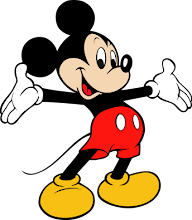Demographics
Main article: Demographics of Sri Lanka
Sri Lanka is the 53rd most populated nation in the world, with an annual population growth rate of 0.79%. Sri Lanka has a birth rate of 15.63 births per 1,000 people and a death rate of 6.49 deaths per 1,000 people. Population density is the greatest in western Sri Lanka, especially in and around Colombo. There is a small population on the island of the Vedda people. These are believed to be the oldest and indigenous ethnic group to inhabit the island. The Sinhalese people form the largest ethnic group in the nation, composing approximately 81.9% of the total population. Tamils are concentrated in the North, East, Central and Western provinces of the country. Sri Lankan Tamils are second major ethnic group lived for centuries in Sri Lanka. Indian Tamils who were brought as indentured labourers from India by British colonists to work on estate plantations, nearly 50% of whom were repatriated following independence in 1948,[36][page needed] are called "Indian Origin" Tamils. They are distinguished from the native Tamil population that has resided in Sri Lanka since ancient times. According to 2001 census data Indian Tamils makeup 5.1% of the Sri Lankan population and, Sri Lankan Tamils 4.3% but this figure only accounted for Sri Lankan Tamils in government-controlled areas, not accounting for those in rebel-held territories. The World Factbook states that Sri Lankan Tamils make up 14% of the population. There is a significant population (8.0%) of Moors, who trace their lineage to Arab traders and immigrants from the Middle East. Their presence is concentrated in the cities and the central and eastern provinces. There are also small ethnic groups such as the Burghers (of mixed European descent) and Malays from Southeast Asia.Language
Main articles: Languages of Sri Lanka and Official bilingualism in Sri Lanka
Sinhalese and Tamil are the two official languages of Sri Lanka. English is spoken by approximately 10% of the population, and is widely used for education, scientific and commercial purposes. Members of the Burgher community speak variant forms of Portuguese Creole and Dutch with varying proficiency, while members of the Malay community speak a form of creole Malay that is unique to the island.Religions
Temple of the Tooth is the focal point of Buddhism in Sri Lanka
The Nallur Kandaswamy Kovil, Jaffna is an important place for Hindus in Sri Lanka
Main article: Religion in Sri Lanka
Sri Lanka has a multi ethnic and multi religious population. Buddhism constitutes the religious faith of about 70% of the population of the island,[37][38] most of whom follow the Theravada school of Buddhism.[39] According to traditional Sri Lankan chronicles, Buddhism was introduced into Sri Lanka in the 2nd century BCE by Venerable Mahinda, the son of the Emperor Ashoka, during the reign of Sri Lanka's King Devanampiyatissa.[39] During this time, a sapling of the Bodhi Tree under which the Buddha attained enlightenment was brought to Sri Lanka and the first monasteries were established under the sponsorship of the Sri Lankan king. The Pali Canon (Thripitakaya), having previously been preserved as an oral tradition, was first committed to writing in Sri Lanka around 30 BC.[40]Sri Lanka has the longest continuous history of Buddhism of any predominately Buddhist nation,[39] with the Sangha having existed in a largely unbroken lineage since its introduction in the 2nd century BCE. During periods of decline, the Sri Lankan monastic lineage was revived through contact with Thailand and Burma.[40] Periods of Mahayana influence, as well as official neglect under colonial rule, created great challenges for Theravada Buddhist institutions in Sri Lanka, but repeated revivals and resurgences—most recently in the 19th century—have kept the Theravada tradition alive for over 2000 years. Hinduism the second most religion is came from neighboring South India. Most of the Hindus were Tamils who are majority in Northern Sri Lanka.
| Sri Lanka religiosity | ||||
|---|---|---|---|---|
| religion | percent | |||
| Buddhism | 69.1% | |||
| Islam | 7.6% | |||
| Hinduism | 7.1% | |||
| Christianity | 6.2% | |||
| Other | 10% | |||
Religion plays an important part in the life and culture of Sri Lankans. The Buddhist majority observe Poya Days, once per month according to the Lunar calendar. The Hindus and Muslims also observe their own holidays. There are many Buddhist temples in Sri Lanka and many mosques, Hindu temples and churches across the island, especially in areas where respective communities are concentrated. Buddhists are distributed across most parts of the island except in the north. Hindus are concentrated in north, east, and central high lands. Christians, particularly Roman Catholics are mainly concentrated along the western coastal belt. Muslims are concentrated in several pockets along the coast and in interior. All religious communities are represented in western province and in other urban centers in sizable numbers.

